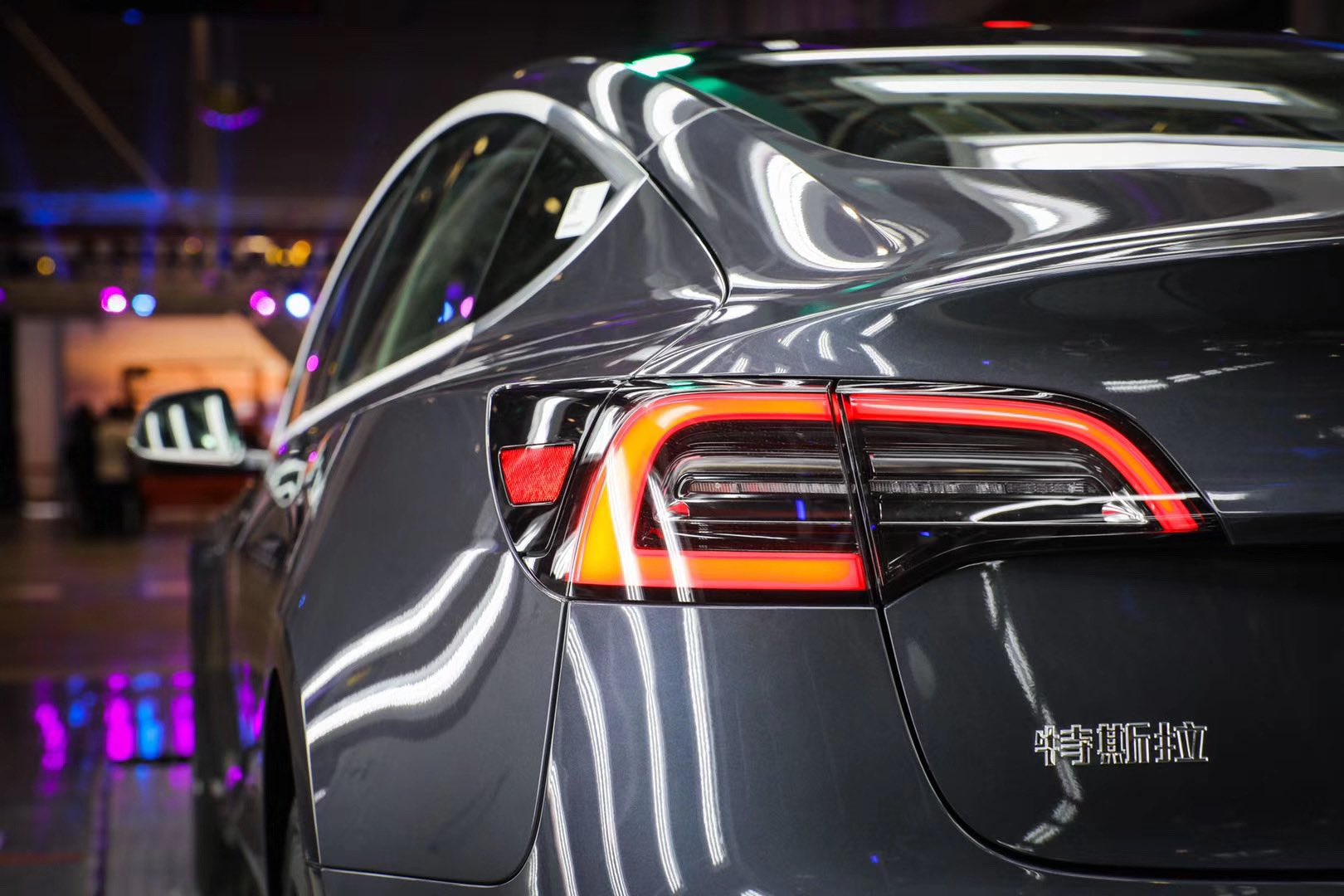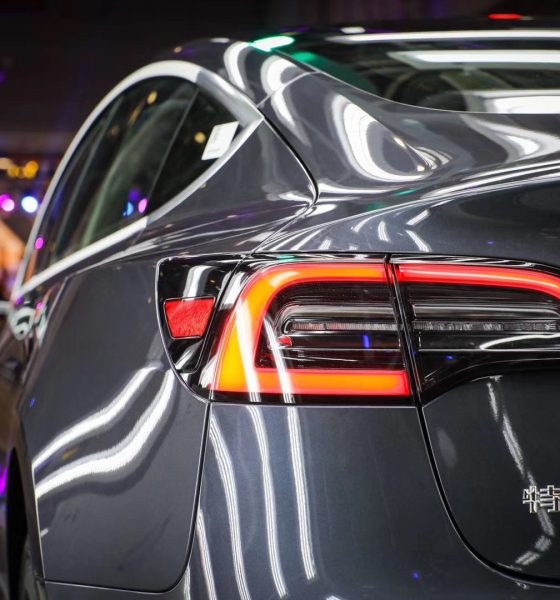

News
Tesla applies to sell new China-Made Model 3s with ternary batteries
Tesla China has applied for the approval to sell and receive subsidies for two new Model 3 variants. The two new configurations of the sedan will use lithium-ion ternary batteries that would be more favorable across China as varying weather conditions can affect the performance of the vehicles.
Documents found on the Chinese Ministry of Industry and Information Technology website show the company wants to sell two new Dual Motor variants of the electric sedan. It appears that the electric automaker could bring two new configurations of Tesla’s most popular vehicle could make their way to China shortly.
The chart found by @DKurac shows the two vehicles, “TSL7000BEVBA0” and “TSL7000BEVBA1,” along with their specifications.
The vehicles would use lithium-ion ternary battery packs instead of the lithium-ion phosphate power sources that Tesla used in its Made in China Model 3 Standard Range version.
Tesla Shanghai applies for approval of two M3 versions for sales and subsidies in #China, MIIT document shows.#LFP version gets approved for #auto purchase tax exemption. pic.twitter.com/Er2fysiQjY
— Moneyball (@DKurac) July 21, 2020
According to Large.net, lithium-ion ternary batteries are better for household electric vehicles because they can perform more efficiently with low-temperature resistance and ample rate charging.
Because of China’s massive land spread and vastly differing climate from area to area, the use of ternary batteries could be more beneficial to owners in the country. In Beijing, the highest temperature during the Summer months is around 104 degrees Fahrenheit (40 degrees Celsius). The lowest temperature in the winter can get down to 40 degrees Fahrenheit or 4 degrees Celsius.
The use of the ternary batteries could be more suitable for the wide temperature ranges that the Chinese climate has to offer. Lithium-ion phosphate batteries with a high-temperature resistance are not capable of performing as well in cold climates, which eventually leads to range depletion.
This issue was confronted by Tesla with the Model Y. The company, instead of modifying battery cells, installed a heat pump into the all-electric crossover that would increase efficiency while traveling in colder climates.
Still, the exact configurations of both vehicles listed are not definite.
Both of the cars that appear on the chart are Dual Motor configurations of the Model 3. Interestingly enough, the Performance variant is already for sale in China because it is listed on Tesla’s website. This development begs the question of which two dual-motor configurations are listed on the above application.
Interestingly enough, the vehicle recognized as “TSL7000BEVBA1” on the chart has a more robust rear motor than the other car that is listed. However, it also has less energy consumption per 100 kilometers and a higher range rating, which means it would not line up with the Performance variant’s characteristics.
Meanwhile, the Dual Motor Long Range All-Wheel Drive version of the Model 3 remains off of the website, for now.
In March, Tesla enthusiast @JayInShanghai spotted a fleet of Model 3 Performance vehicles leaving Giga Shanghai on a tractor-trailer. At the time, Tesla had not yet announced the Model 3 Performance to be available in China. Still, it was evident that the company was testing the configuration ahead of its production in China.
Tesla will expand the production of its vehicles in Shanghai as it begins to offer more Model 3 variants and is currently working on building the second phase of its Chinese Gigafactory for the Model Y.

News
Tesla FSD fleet is nearing 7 billion total miles, including 2.5 billion city miles
As can be seen on Tesla’s official FSD webpage, vehicles equipped with the system have now navigated over 6.99 billion miles.

Tesla’s Full Self-Driving (Supervised) fleet is closing in on almost 7 billion total miles driven, as per data posted by the company on its official FSD webpage.
These figures hint at the massive scale of data fueling Tesla’s rapid FSD improvements, which have been quite notable as of late.
FSD mileage milestones
As can be seen on Tesla’s official FSD webpage, vehicles equipped with the system have now navigated over 6.99 billion miles. Tesla owner and avid FSD tester Whole Mars Catalog also shared a screenshot indicating that from the nearly 7 billion miles traveled by the FSD fleet, more than 2.5 billion miles were driven inside cities.
City miles are particularly valuable for complex urban scenarios like unprotected turns, pedestrian interactions, and traffic lights. This is also the difference-maker for FSD, as only complex solutions, such as Waymo’s self-driving taxis, operate similarly on inner-city streets. And even then, incidents such as the San Francisco blackouts have proven challenging for sensor-rich vehicles like Waymos.
Tesla’s data edge
Tesla has a number of advantages in the autonomous vehicle sector, one of which is the size of its fleet and the number of vehicles training FSD on real-world roads. Tesla’s nearly 7 billion FSD miles then allow the company to roll out updates that make its vehicles behave like they are being driven by experienced drivers, even if they are operating on their own.
So notable are Tesla’s improvements to FSD that NVIDIA Director of Robotics Jim Fan, after experiencing FSD v14, noted that the system is the first AI that passes what he described as a “Physical Turing Test.”
“Despite knowing exactly how robot learning works, I still find it magical watching the steering wheel turn by itself. First it feels surreal, next it becomes routine. Then, like the smartphone, taking it away actively hurts. This is how humanity gets rewired and glued to god-like technologies,” Fan wrote in a post on X.
News
Tesla starts showing how FSD will change lives in Europe
Local officials tested the system on narrow country roads and were impressed by FSD’s smooth, human-like driving, with some calling the service a game-changer for everyday life in areas that are far from urban centers.

Tesla has launched Europe’s first public shuttle service using Full Self-Driving (Supervised) in the rural Eifelkreis Bitburg-Prüm region of Germany, demonstrating how the technology can restore independence and mobility for people who struggle with limited transport options.
Local officials tested the system on narrow country roads and were impressed by FSD’s smooth, human-like driving, with some calling the service a game-changer for everyday life in areas that are far from urban centers.
Officials see real impact on rural residents
Arzfeld Mayor Johannes Kuhl and District Administrator Andreas Kruppert personally tested the Tesla shuttle service. This allowed them to see just how well FSD navigated winding lanes and rural roads confidently. Kruppert said, “Autonomous driving sounds like science fiction to many, but we simply see here that it works totally well in rural regions too.” Kuhl, for his part, also noted that FSD “feels like a very experienced driver.”
The pilot complements the area’s “Citizen Bus” program, which provides on-demand rides for elderly residents who can no longer drive themselves. Tesla Europe shared a video of a demonstration of the service, highlighting how FSD gives people their freedom back, even in places where public transport is not as prevalent.
What the Ministry for Economic Affairs and Transport says
Rhineland-Palatinate’s Minister Daniela Schmitt supported the project, praising the collaboration that made this “first of its kind in Europe” possible. As per the ministry, the rural rollout for the service shows FSD’s potential beyond major cities, and it delivers tangible benefits like grocery runs, doctor visits, and social connections for isolated residents.
“Reliable and flexible mobility is especially vital in rural areas. With the launch of a shuttle service using self-driving vehicles (FSD supervised) by Tesla in the Eifelkreis Bitburg-Prüm, an innovative pilot project is now getting underway that complements local community bus services. It is the first project of its kind in Europe.
“The result is a real gain for rural mobility: greater accessibility, more flexibility and tangible benefits for everyday life. A strong signal for innovation, cooperation and future-oriented mobility beyond urban centers,” the ministry wrote in a LinkedIn post.
News
Tesla China quietly posts Robotaxi-related job listing
Tesla China is currently seeking a Low Voltage Electrical Engineer to work on circuit board design for the company’s autonomous vehicles.

Tesla has posted a new job listing in Shanghai explicitly tied to its Robotaxi program, fueling speculation that the company is preparing to launch its dedicated autonomous ride-hailing service in China.
As noted in the listing, Tesla China is currently seeking a Low Voltage Electrical Engineer to work on circuit board design for the company’s autonomous vehicles.
Robotaxi-specific role
The listing, which was shared on social media platform X by industry watcher @tslaming, suggested that Tesla China is looking to fill the role urgently. The job listing itself specifically mentions that the person hired for the role will be working on the Low Voltage Hardware team, which would design the circuit boards that would serve as the nervous system of the Robotaxi.
Key tasks for the role, as indicated in the job listing, include collaboration with PCB layout, firmware, mechanical, program management, and validation teams, among other responsibilities. The role is based in Shanghai.
China Robotaxi launch
China represents a massive potential market for robotaxis, with its dense urban centers and supportive policies in select cities. Tesla has limited permission to roll out FSD in the country, though despite this, its vehicles have been hailed as among the best in the market when it comes to autonomous features. So far, at least, it appears that China supports Tesla’s FSD and Robotaxi rollout.
This was hinted at in November, when Tesla brought the Cybercab to the 8th China International Import Expo (CIIE) in Shanghai, marking the first time that the autonomous two-seater was brought to the Asia-Pacific region. The vehicle, despite not having a release date in China, received a significant amount of interest among the event’s attendees.








